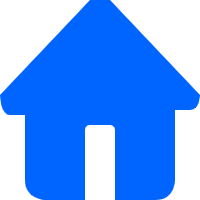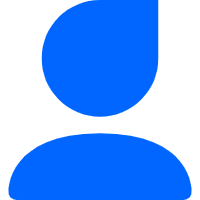StainedGlass论文
StainedGlass: interactive visualization of massive tandem repeat structures with identity heatmaps
代码链接 https://mrvollger.github.io/StainedGlass/ https://github.com/mrvollger/StainedGlass
利用基因组数据运行如下命令
snakemake -s ~/biotools/StainedGlass/workflow/Snakefile –configfile=/home/myan/biotools/StainedGlass/config/config.yaml –config sample=Arabidopsis fasta=/data/myan/raw_data/practice/stainedGlass/Col-CEN_v1.2.fasta –cores 24 make_figures -p
以上命令会生成 Arabidopsis.2000.10000.bed.gz 文件,所有染色体全部在这个文件里,软件生成的1号染色体的图
image.png
我们把1号染色体大概14M到19M的区间提取出来,自己作图
library(data.table)
library(tidyverse)
dat<-fread(“Arabidopsis.2000.10000.bed.gz”) dat%>%filter(#query_name==”Chr1″)%>%filter(reference_name==”Chr1″)%>%write_tsv(“Arabidopsis.Chr1.bed”)
dat.at.chr1<-read_tsv(“D:/Jupyter/practice/Arabidopsis.Chr1.bed”)
dat.at.chr1 %>% colnames()
dat.at.chr1 %>%
filter(query_start>=14000000 & query_start<=18000000) %>%
filter(reference_start>=14000000 & reference_start <= 18000000) %>%
mutate(x=query_start/2000,
y=reference_start/2000) %>%
ggplot(aes(x=x,y=y))+
geom_tile(aes(fill=perID_by_events))
image.png
把这个图旋转90度,参考 公众号推文 矩形旋转问题之风波再起(老俊俊的生信笔记)这里用到了一个函数getRotatedPolygon 把原始数据进行转换(这里转换的逻辑我暂时还没想明白),这个函数来源于R包BioSeqUtils,我安装这个R包的时候遇到报错,DescTools 这个R包一直没有安装成功。暂时解决不了。不按照这个R包,把这个函数单独复制出来也可以用 https://github.com/junjunlab/BioSeqUtils/blob/master/R/createGraphFuncs.R
getRotatedPolygon <- function(data = NULL, rx = NULL, ry = NULL,
value = NULL,theta = 45, workers = 1,
window = 1) {
# Convert theta to radians
theta_rad <- pi * (theta / 180)
# Set a “plan” for how the code should run.
# future::plan(future::multisession, workers = workers)
# Vectorize the operations
data$x <- data[[rx]]
data$y <- data[[ry]]
data$xr <- data$x * cos(theta_rad) + data$y * sin(theta_rad)
data$yr <- data$y * cos(theta_rad) – data$x * sin(theta_rad)
data$xr <- data$xr * cos(theta_rad)
data$yr <- data$yr * sin(theta_rad)
data$yr <- round(data$yr,digits = 1)
# Combine the results
rotated_coods <- furrr::future_map_dfc(data, identity)
# ============================================================================
# check window size
if(is.numeric(window)){
window_size = window0.5 }else if(is.character(window)){ window_size = rotated_coods[[window]]0.5
}else{
message(“please supply column name or numeric value!”)
}
# get cordinates
polygon_x <- cbind(rotated_coods$xr – window_size, rotated_coods$xr,
rotated_coods$xr + window_size, rotated_coods$xr)
polygon_y <- cbind(rotated_coods$yr, rotated_coods$yr + window_size,
rotated_coods$yr, rotated_coods$yr – window_size)
polygon_id <- rep(1:nrow(rotated_coods), 4)
polygon_value <- rep(rotated_coods[[value]], 4)
# polygon coords
polygon_coods <- data.frame(xp = as.vector(polygon_x),
yp = as.vector(polygon_y),
id = polygon_id,
value = polygon_value)
# ============================================================================
# output
return(list(rotated_coods = rotated_coods,
polygon_coods = polygon_coods))
}
把数据做一个转化
dat.at.chr1 %>%
filter(query_start>=14000000 & query_start<=18000000) %>%
filter(reference_start>=14000000 & reference_start <= 18000000) %>%
mutate(x=query_start/2000,
y=reference_start/2000) %>%
select(x,y,perID_by_events) %>%
pivot_wider(names_from = “y”,values_from = “perID_by_events”) %>%
mutate_all(~replace(.,is.na(.),0)) %>%
pivot_longer(!x,names_to = “y”) %>%
mutate(y=as.numeric(y)) -> new.dat
这里query_start/2000 2000是步长
new.dat %>%
ggplot(aes(x=x,y=y))+
geom_tile(aes(fill=value))
这个图里有很多0,最深蓝色的位置都是0,可以把这些0全部过滤掉
dfr <- getRotatedPolygon(data = new.dat,rx = ‘x’,ry = ‘y’,value = ‘value’, workers = 1,window = 1) jpeg(file = “abc.jpeg”) ggplot() + geom_polygon(data = dfr$polygon_coods %>% filter(value>0),
aes(x = xp,y = yp,group = id,fill=value),
color = NA) +
#ylim(0,NA)+
coord_equal()
dev.off()
image.png
如果要上三角,就把y值设置为大于0,如果要下三角就把y值设置小于0
jpeg(file = “abc1.jpeg”,width = 1000,height = 1000)
ggplot() +
geom_polygon(data = dfr$polygon_coods %>% filter(value>0),
aes(x = xp,y = yp,group = id,fill=value),
color = NA) +
#ylim(0,NA)+
coord_equal()+
scale_y_continuous(limits = c(0,NA))
dev.off()
image.png
StainedGlass 自带的画图脚本是把连续的值离散化了,离散化的函数是
ncolors <- 11 get_colors <- function(sdf) { bot <- floor(min(sdf$perID_by_events)) top <- 100 breaks <- unique(c(quantile(sdf$perID_by_events, probs = seq(0, 1, by = 1 / ncolors)))) labels <- seq(length(breaks) – 1) # corner case of only one %id value if (length(breaks) == 1) { return(factor(rep(1, length(sdf$perID_by_events)))) } return(cut(sdf$perID_by_events, breaks = breaks, labels = labels, include.lowest = TRUE)) } 稍微修改一下 get_colors <- function(x) { ncolors <- 11 bot <- floor(min(x)) top <- 100 breaks <- unique(c(quantile(x, probs = seq(0, 1, by = 1 / ncolors)))) labels <- seq(length(breaks) – 1) # corner case of only one %id value if (length(breaks) == 1) { return(factor(rep(1, length(x)))) } return(cut(x, breaks = breaks, labels = labels, include.lowest = TRUE)) } 作图代码 dfr$polygon_coods %>% filter(value>0) %>%
mutate(new_value=get_colors(value)) -> new.df.polygon_coods
jpeg(file = “abc3.jpeg”,width = 1000,height = 1000)
ggplot() +
geom_polygon(data=new.df.polygon_coods,
aes(x = xp,y = yp,group = id,fill=new_value),
color = NA) +
#ylim(0,NA)+
coord_equal()+
scale_y_continuous(limits = c(0,NA))+
cowplot::theme_cowplot() +
scale_fill_brewer(palette = “Spectral”, direction = -1) +
theme(legend.position = “none”)
dev.off()
pdf(file = “abc3.pdf”,width = 10,height = 10)
ggplot() +
geom_polygon(data=new.df.polygon_coods,
aes(x = xp,y = yp,group = id,fill=new_value),
color = NA) +
#ylim(0,NA)+
coord_equal()+
scale_y_continuous(limits = c(0,NA))+
cowplot::theme_cowplot() +
scale_fill_brewer(palette = “Spectral”, direction = -1) +
theme(legend.position = “none”)
dev.off()
image.png
左上角的图
ggplot(data = new.df.polygon_coods,
aes(value, fill = new_value)) +
geom_histogram(bins = 300) +
cowplot::theme_cowplot() +
scale_fill_brewer(palette = “Spectral”, direction = -1) +
theme(legend.position = “none”)
image.png
把两个图组合到一起
p_lone<-ggplot() +
geom_polygon(data=new.df.polygon_coods,
aes(x = xp,y = yp,group = id,fill=new_value),
color = NA) +
#ylim(0,NA)+
coord_equal()+
scale_y_continuous(limits = c(0,NA))+
cowplot::theme_cowplot() +
scale_fill_brewer(palette = “Spectral”, direction = -1) +
theme(legend.position = “none”)
p_hist<-ggplot(data = new.df.polygon_coods,
aes(value, fill = new_value)) +
geom_histogram(bins = 300) +
cowplot::theme_cowplot() +
scale_fill_brewer(palette = “Spectral”, direction = -1) +
theme(legend.position = “none”)
pdf(file = “abc4.pdf”,width = 10,height = 10)
plot <- p_lone + annotation_custom(
ggplotGrob(p_hist),
xmin = 7000, xmax = 7500,
ymin = 500, ymax = 1000
)
print(plot)
dev.off()
image.png
其他知识点 R语言数据框填充缺失值
dat %>%
mutate_all(~replace(.,is.na(.),0))
dat %>%
replace_na(list(x=0,y=100,z=1000))
如果是字符变量带因子水平填充缺失值会失败,需要把因子水平去掉
声明:文中观点不代表本站立场。本文传送门:https://eyangzhen.com/412703.html




